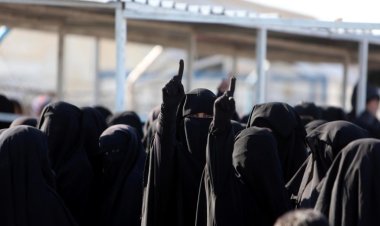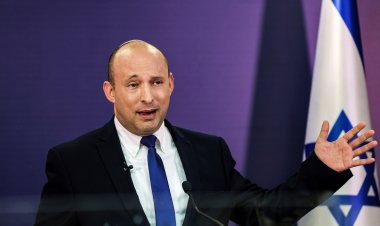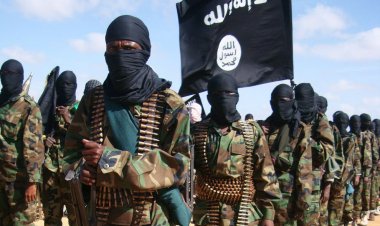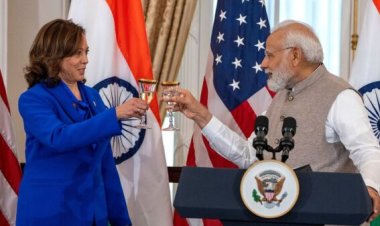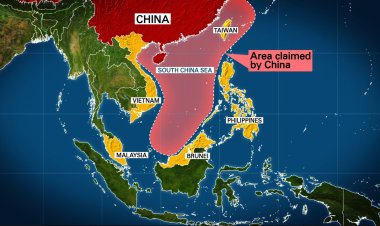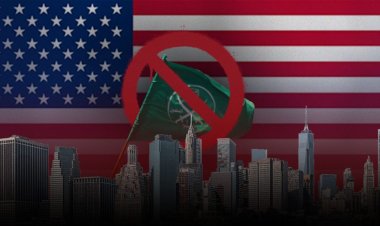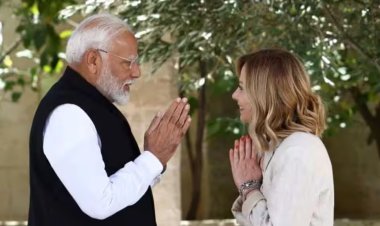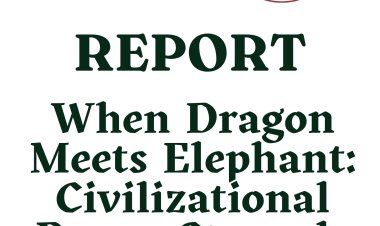Strategic Horizons: Navigating the Dynamic Landscape of India-UAE Relations
The article discusses the bilateral relations between India and UAE. In recent years, the UAE and India have strengthened their ties through a range of initiatives, including the signing of a free trade agreement, reciprocal high-level visits, and more. This has led to a further consolidation of the strategic and economic partnership between the two countries
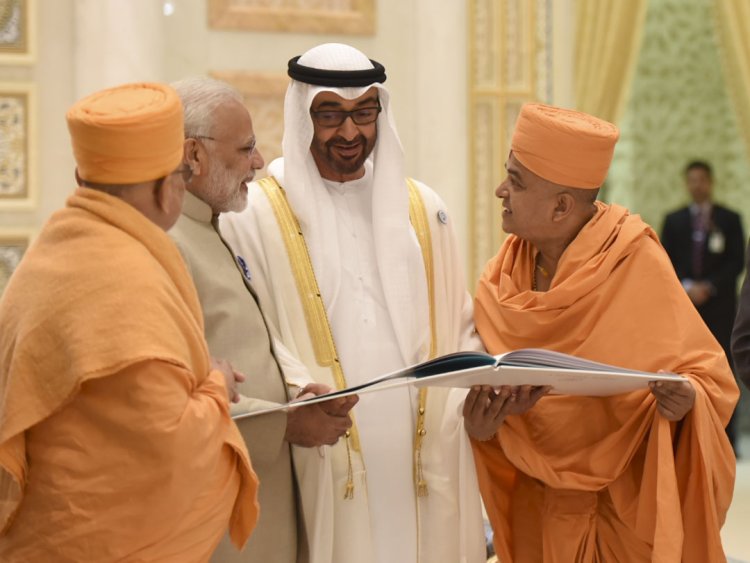
Analysis
By Niharika Godara
Last month, Honourable Prime Minister of India, Narendra Modi, visited the Gulf country to inaugurate Abu Dhabi's first Hindu temple which was first announced during his visit to the UAE in 2018. A year later, a foundation stone-laying ceremony took place. It was his seventh visit to the United Arab Emirates (UAE), and it marked a significant milestone in the deepening of the strategic and economic relationship between India and the UAE. This visit came a month after he inaugurated Ram temple in Ayodhya.
In recent years, the UAE and India have strengthened their ties through a range of initiatives, including the signing of a free trade agreement, reciprocal high-level visits, and more. This has led to a further consolidation of the strategic and economic partnership between the two countries. The inauguration of the Hindu temple in Abu Dhabi is a testament to the growing cultural and religious ties between the UAE and India, and it underscores the importance of this partnership in promoting peace, stability, and prosperity in the region.
Bilateral economic ties:
The UAE is India's third-largest commercial partner, after the United States and China, given that the value of their commerce is approximately 73 billion US dollars. The signing of the Comprehensive Economic Partnership Agreement (CEPA) in 2022, which took place during the Virtual Summit between the Honourable PM Modi and His Highness President Sheikh Mohamed bin Zayed al Nahyan, reaffirms the commitment to enhancing bilateral trade, with the objective of reaching US$ 100 billion in goods and US$ 15 billion in services within a period of five years. Exemplifying the reciprocal commitment to supporting economic growth and collaboration, UAE has made major investments in India, amounting to over 20-21 billion US dollars. These investments have been made with a significant focus on infrastructure and the food sector. This bilateral economic relationship is characterised by its depth and diversity, as evidenced by the fact that Indian companies have made large investments in the UAE, totalling more than 85 billion US dollars, across a variety of industries.
Bilateral agreements and cooperation:
The two nations have established a strong and multi-faceted relationship, which is characterised by a number of key agreements and cooperation that span a variety of fields. The recent signing of eight pacts between the two countries demonstrates their dedication to increasing their cooperation in important areas such as investments, the trade of power, and digital payment platforms. Among the most important initiatives that have been taken to facilitate seamless cross-border transactions and to promote financial connectivity are the interlinking of digital payment systems, specifically UPI (India) and AANI (UAE), as well as the connecting of domestic debit/credit cards, RuPay (India), with JAYWAN (UAE).
As a "Key Enabler" for more investments in both countries, the Bilateral Investment Treaty (BIT) that was signed between the two countries helps to facilitate these investments. With a pledge of USD 75 billion, the UAE has made a considerable investment in India's infrastructure sector, which has made it the fourth-largest Foreign Direct Investment (FDI) investor in 2022-2023. This investment reflects the depth of economic relations between the two countries
In September of 2023, the Intergovernmental Framework Agreement on the India-Middle East Economic Corridor (IMEC) was unveiled with the intention of enhancing India's engagement with the United Arab Emirates and fostering greater connectivity in the area. The agreements on energy cooperation, in particular those that pertain to the field of electrical interconnection and trade, bring to light new potential for collaboration in the crucial subject of energy security.
Cultural milestones and landmarks:
The protocol that was signed between the National Archives of India and the United Arab Emirates pertains to the restoration and preservation of archival material. This convention serves as an example of the cultural cooperation that exists between the two countries. The efforts of collaboration extend to providing support for the Maritime Heritage Complex in Lothal, Gujarat, which reflects the fact that both parties have an interest in cultural heritage. Emiratis are extremely familiar with and receptive to Indian culture, and the United Arab Emirates is home to more than 3.3 million Indians. At the 2019 Abu Dhabi International Book Fair, India was the country that served as the Guest of Honour (guest country).
Major theatres and cinema halls in the United Arab Emirates broadcast commercial Hindi, Malayalam, and Tamil films. Indian cinema, television, and radio stations are freely accessible and have a good viewership. Additionally, members of the Emirati community take part in our annual International Day of Yoga events, and the UAE is home to a number of yoga and meditation educational institutions that are operating with great success.
In the context of the bilateral relationship, the BAPS Temple in Abu Dhabi is of particular significance since it serves as a symbol of the friendship and cultural ties that exist between India and the United Arab Emirates. The United Arab Emirates (UAE) provided land for the construction of the temple, and India expressed its gratitude for this cooperation. The BAPS Temple, is a religious and cultural landmark in Abu Dhabi. It belongs to the Swaminarayan Sampradaya, a Vaishnava tradition in Hinduism, and has around 1,550 temples worldwide. The temple showcases traditional Hindu architecture and displays deities from different parts of India. It also highlights value stories from civilizations worldwide.
Additionally, the commitment to boosting connectivity and trade is highlighted by agreements on the development of port facilities as well as the laying of the foundation stone for the Bharat Mart in Dubai. The Bharat Mart, which combines retail, warehouse, and logistics capabilities, has the potential to play a significant role in encouraging the exports of India's micro, small, and medium sectors in the Gulf region, West Asia, Africa, and Eurasia.
In 1972, India and the UAE established diplomatic relations. In 2015, India's Prime Minister paid a visit to the UAE, which resulted in a considerable increase in the bilateral relationships between the two countries. The transformation of bilateral relations into a comprehensive strategic partnership in 2017 laid the groundwork for more ways in which the two countries might work together. With bilateral trade exceeding USD 85 billion in 2022-23, the United Arab Emirates has become India's third-largest trading partner and second-largest export destination.
The convergence of digital payment systems is a notable development, as evidenced by the Comprehensive Economic Partnership Agreement and the sanctioning of the RuPay card by the United Arab Emirates. The partnership's fundamental attribute is illustrated by the UAE's contribution to India's energy security, including the safeguarding of crucial oil reserves near Mangalore. The IMEC and I2U2 represent two regional initiatives in which both nations actively engage, demonstrating a shared purpose and strategic alignment.
Challenges and opportunities:
Even though there is a positive trend, there are challenges in the relations between India and the UAE. Exports from India are impacted by non-tariff barriers, such as mandated Halal certification, which leads to a decrease in the amount of processed food that is exported. There are obstacles that Indian endeavours in the region must overcome because of the economic impact that China has in the UAE. A number of key problems include the human rights concerns raised by the Kafala system, in particular those pertaining to immigrant labourers, as well as the United Arab Emirates' financial help to Pakistan, which raises concerns about the possibility of exploitation.
The delicate diplomatic balancing act that must be navigated in the midst of regional crises, such as the war between Israel and Hamas and the conflict between Iran and Arab nations, might provide extra problems. Taking action to eliminate trade restrictions that have an impact on Indian exports, increasing economic presence through investments and partnerships, combating the economic influence of China in a transparent manner, and addressing concerns over the rights of migrant workers in the UAE are all critical steps that need to be taken.
The economic, cultural, and strategic components of the connection between India and the United Arab Emirates are all included in the diverse nature of this partnership. Recent collaborations and agreements demonstrate a dedication to bolstering existing relationships and overcoming obstacles for the purpose of achieving mutually beneficial outcomes. The comprehensive collaboration that exists between the two countries has the ability to serve as a model for cooperation in a global landscape that is rapidly changing.
Disclaimer: This paper is the author's individual scholastic contribution and does not necessarily reflect the organization's viewpoint.
Niharika Godara completed her graduation in Political Science Hons from DU and currently pursuing Masters in International Relations from JGU. Her interest areas are geopolitics and diplomacy and the role of international institutions in addressing global challenges.

